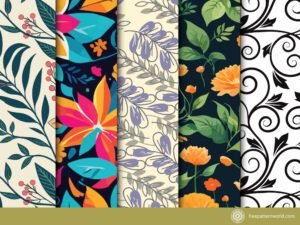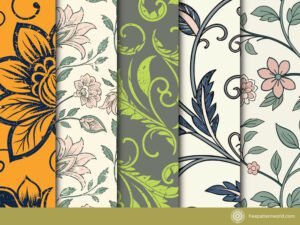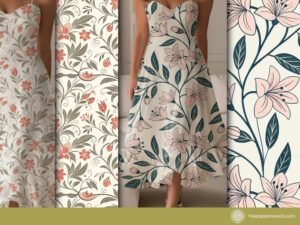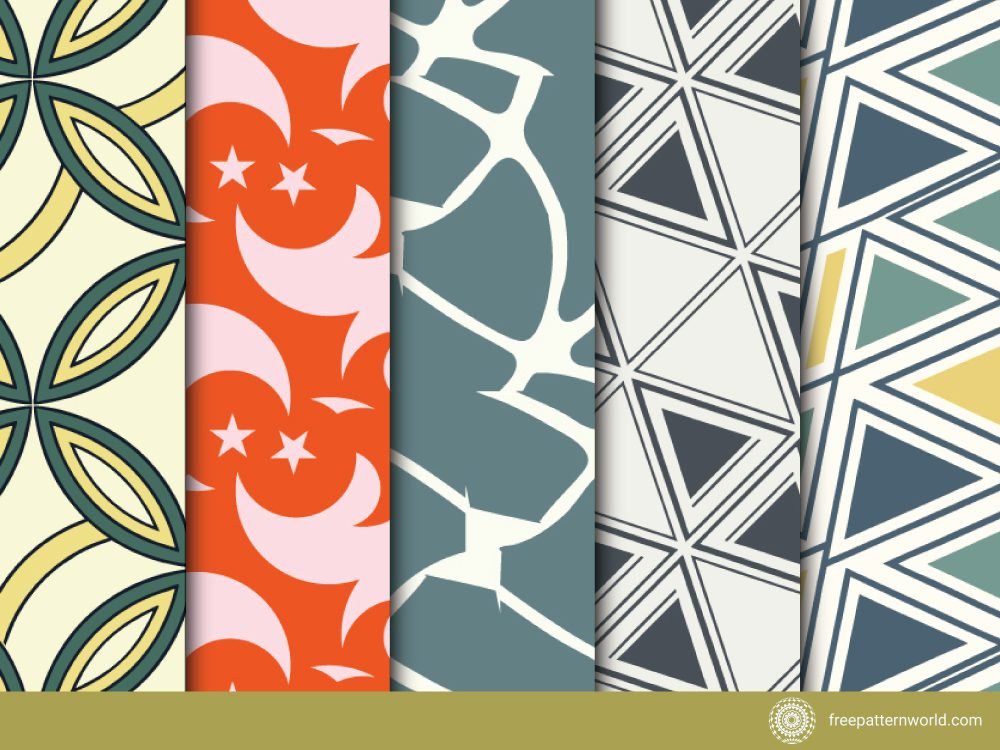
Table of Contents
Explore the top modular geometric pattern designs that define modern creativity. Learn their features, applications, and benefits in fashion, interiors, and digital art, and discover how these patterns shape contemporary design.
Introduction
Patterns have always been a cornerstone of artistic expression, but the modern design world has seen a surge in structured and mathematical aesthetics. Among these, the modular geometric pattern stands out as one of the most influential. Built on the principles of repetition, symmetry, and modularity, these patterns achieve a sense of balance while offering endless creative possibilities.
From architectural tiling to digital graphics, modular geometric designs are everywhere, reshaping the way we perceive visual order and beauty. This blog will explore the top modular geometric patterns, their history, practical uses, and why they continue to influence designers worldwide.
What Defines a Modular Geometric Pattern?
A modular geometric pattern is based on repeated shapes or modules that connect seamlessly. These modules—whether squares, hexagons, triangles, or circles—are repeated to form a larger, continuous design.
Repetition of Units
The essence of modular geometry lies in repeating simple units to create complex visuals.
Symmetry and Balance
Patterns often rely on symmetrical arrangements that establish harmony and order.
Scalability
Modules can be expanded or minimized without disrupting the flow, making these patterns versatile for both large and small surfaces.
With these qualities, modular geometric patterns combine logic with creativity in a way that feels both timeless and modern.
Historical Roots of Modular Patterns
While modular geometry feels modern, its origins trace back centuries.
Islamic Art and Architecture
Geometric tiling, often found in mosques, demonstrates the early use of modular geometry for both decoration and symbolism.
Greek and Roman Mosaics
Ancient civilizations embraced modular patterns in floors, walls, and pottery, using symmetry to convey order.
Modernist Movements
Artists in the 20th century, such as those in the Bauhaus school, revived modular geometry as a foundation for clean, functional design.
This evolution shows how modular geometric pattern designs bridge tradition and modernity.
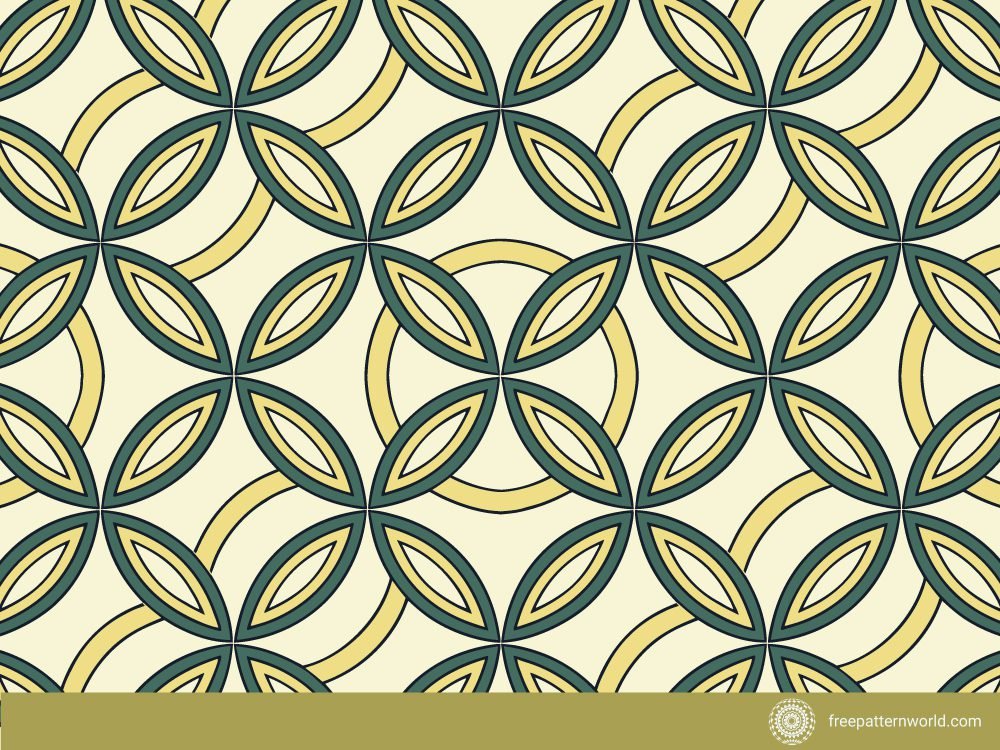
Top Modular Patterns
The beauty of modular geometry lies in its variety. Each type brings its own mood and functionality.
Hexagonal Grid Patterns
Inspired by nature’s honeycomb, hexagons provide strength and continuity, often used in tiling and digital layouts.
Triangular Tessellations
Triangles are among the simplest shapes, but when arranged in tessellations, they create dynamic and energetic patterns.
Square Block Grids
Squares convey stability and structure, making them ideal for textiles, architecture, and minimalist branding.
Circular Modular Patterns
Overlapping circles or radial repetitions add fluidity to modular geometry, balancing strict order with softness.
Diamond and Rhombus Patterns
These angular shapes introduce depth and visual rhythm, often seen in both traditional crafts and contemporary wallpapers.
Each of these modular geometric patterns plays a unique role in defining design styles across different industries.

Applications of Modular Geometric Patterns
Modular geometric designs extend beyond decoration, offering functionality and aesthetic appeal across fields.
Architecture and Interior Design
From floor tiles to feature walls, modular geometric patterns give spaces modern elegance while maintaining order.
Fashion and Textiles
Designers use modular geometric patterns for clothing, accessories, and fabrics to add visual intrigue without overwhelming.
Digital and Graphic Design
In branding, web layouts, and illustrations, these patterns provide a futuristic and professional aesthetic.
Industrial and Product Design
Furniture, packaging, and household items frequently integrate modular geometry to highlight functionality and beauty.
This adaptability ensures the modular geometric pattern remains relevant in every corner of creative industries.

Benefits of Modular Geometric Patterns
The popularity of modular designs reflects their clear benefits.
Timeless Appeal
Rooted in history yet modern in execution, these patterns never go out of style.
Flexibility Across Media
From print to digital, modular geometry adapts without losing its integrity.
Visual Clarity
Geometric repetition brings structure, making patterns easy to recognize and pleasing to the eye.
Symbolic Value
For many cultures, geometry represents harmony, logic, and perfection, giving these patterns deeper meaning.
By combining practicality with aesthetic beauty, modular geometric patterns stand as a staple of global design.

Tips for Working with Modular Geometric Patterns
Designers benefit from strategic approaches when using modular geometry.
Balance with Simplicity
Pair bold geometric modules with neutral backgrounds to avoid visual overload.
Play with Scale
Varying the size of modules adds depth and interest while maintaining structure.
Experiment with Color
Shifts in hue can completely transform the mood of a modular geometric pattern.
Combine with Organic Elements
Blending geometric precision with natural forms creates striking contrasts.
Following these tips ensures that modular geometry remains impactful and versatile in your projects.
Common Mistakes to Avoid
Even structured patterns can falter if misapplied.
Overcomplicating the Design
Adding too many variations in shape or color can reduce clarity.
Ignoring Context
A pattern suitable for bold packaging may not translate well into subtle interior design.
Misalignment Issues
When working with physical media, misaligned modules disrupt the seamless effect.
Neglecting Scalability
Designs that fail to adapt to different sizes may lose harmony across platforms.
Avoiding these pitfalls helps maintain the sophistication of modular geometric patterns.

Conclusion
The modular pattern embodies the union of logic and creativity. From its ancient roots in mosaics and architecture to its modern applications in fashion, interiors, and digital media, this design style continues to inspire. Its scalability, symmetry, and bold visual appeal make it an essential tool for artists and designers.
As trends evolve, modular geometry will remain central to design innovation, proving that repetition and order can create beauty as powerful as any organic form.
To download more Click here.
Download more free designs from freepatternword and freepik.
Support Us with Crypto!
If you enjoy our content and want to help keep this site running, you can support us with crypto. Your support is appreciated!
USDT(TRC20): TSW1iyNhUHiGvc2VdQvZqkqgCTGvdrnsY7
Bitcoin: 38ZHQNkrbZKYJhbLeFZiCrQdR3C2ddtAzV
ERC-20: 0xe1BD9D788256905c6efFd38333A3fF1b6DE3ce67
What is a modular geometric pattern?
A modular pattern is a design made by repeating geometric shapes, such as squares, triangles, circles, or hexagons, to form a continuous and scalable layout.
Where are modular geometric patterns commonly used?
They are widely used in architecture, textiles, digital design, branding, wallpapers, and packaging because of their structured yet versatile nature.
How do modular geometric patterns differ from regular geometric designs?
While regular geometric designs may use shapes more freely, modular geometric patterns rely on repetition and symmetry of modules that connect seamlessly.
Why are modular geometric popular in modern design?
They are popular because they bring order, clarity, and timeless appeal while allowing endless creativity through variations in scale, color, and arrangement.
Can modular geometric work in fashion?
Yes, fashion designers often use modular geometric patterns on fabrics, accessories, and apparel to create bold, structured, and stylish visual effects.
Are geometric patterns easy to scale for different projects?
Yes, one of their biggest advantages is scalability. The same modular design can be applied to small products like notebooks or large surfaces like walls and floors without losing balance.

